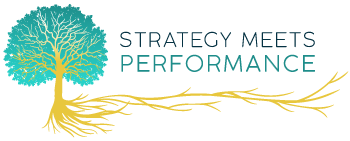By Dr. Sherry Nooravi [Part 1 of 6]
Whether it’s Tony Hsieh of Zappos, Richard Branson of Virgin Group or Herb Kelleher of Southwest Airlines, you often hear successful leaders talk about how their company culture helps them achieve their goals. It’s also clear from my interviews with San Diego’s Most Admired CEOs that they, too, take it seriously and invest time and resources to make sure they’re constantly shaping productive, engaging, and innovative workplaces that benefit their employees, clients, and stakeholders.
While some refer to culture as “the way things are done around here,” it can more specifically be viewed as the collective behaviors that demonstrate what employees value and how they make decisions. You must drive culture with good habits and discipline or it will spawn constant challenges and ingrained bad habits over time. Organizational theorist Edgar Schein described mechanisms that shape culture in his early seminal works: 1) What you pay attention to, 2) How you react to crises, 3) The behaviors you role-model, 4) How you allocate rewards and 5) Your criteria for hiring and dismissing employees.
When working with clients who face stress resulting from rapid growth or lack of alignment between senior leadership and their employees, I see violations of several of these mechanisms from how they’re not “walking the talk” to their employee hiring and development practices. The good news is that with time and energy, you can shape the behaviors you want in your organization just as San Diego’s Most Admired CEOs take the time to do.
Set the Tone from the Top
The CEOs are aligned around the importance of setting the company’s tone from the top. We asked them to share some examples of what it ultimately looks like when it goes well.
Larry Anderson former CEO of Tri-City Hospital and winner in the non-profit category, sees organizational culture as what will happen if he’s not there. “Obviously, clear direction from the top influences culture to some extent, but the culture itself is what employees and other stakeholders in our organization do or will do that they are not directed to do,” he said. “Our employees are our secret sauce; ultimately they decide how excellent care will be delivered. It’s always the little things that matter to patients, things like how long they wait after pressing the call button and if they are comfortable.”
Some measure success not just with bottom-line numbers but also with how engaged employees are. Greg Rogers, CEO of Pacific Building Group and co-recipient in the Privately Held category, is most impressed by companies that have diehard employees who are proud to work there.
“When everyone understands the vision, everyone is rowing in the same direction; it’s like they drank the ‘Kool-Aid’ and are proud to be part of the team,” he said. “A lot of our events involve spouses because we want to honor the fact that spouses are giving up their spouse during work hours.”
Other award-winning CEOs share a similar view about the importance of “walking the talk,” starting at the C-suite:
- Bob Kelly, CEO of the San Diego Foundation and winner in the Large Nonprofit 501(c)3 category, channels his personality and energy into the company’s environment. “Culture starts at the top and is set by the CEO,” he said. “Mine is ‘we’re going to have fun doing serious work. People’s lives and the community depend on us.’”
- Gary Cady, CEO of Torrey Pines Bank and winner in the category of Medium Public Company, said setting the macro tone from the top allows for collaboration up and down the organization. One of the ways he does that is by seeking involvement and buy-in from several levels in the company, something that results in better decisions, helps people feel involved, and allows them to play a significant role in shaping company culture.
- Jim Cable, CEO of Peregrine Semiconductor Corporation and winner in the Large Public Company category, said there are certain behaviors integral to their culture, such as promoting teamwork and innovation. Each year, the corporate goals are shared with employees so they can understand them and their relevance to their work. During high growth periods, they make sure to continue the open communication culture by having all-hands and regular management meetings.
Setting the tone for the organization results in your team receiving a clear message about what is and isn’t important as well as how you’d like to see things done. By communicating that goals can be achieved in a collaborative, energetic manner, employees will understand that their input and buy-in are critical to the company’s success. An important point to keep in mind is the audience for this message. In his bestseller, Good To Great, Jim Collins notes his belief that securing high-quality, high-talent individuals must occur before any overarching strategy can be developed.
Hire Selectively
Collins states that with the right people in the right positions, many of the management problems that plague companies and sap valuable resources will automatically dissipate. Thus, he argues, firms seeking to make the good to great transition may find it worthwhile to expend extra energy and time on personnel searches and decision-making.
This philosophy was echoed among the most admired CEOs, who also believe in taking the time to find people whose values match their organizational culture.
“Culture is critical and we have specifically and often quite painfully only hired people who care about what we’re about,” said Greg Koch, CEO of Stone Brewery and winner in the Large Privately Held category. “We’ve had an open position and the qualified person would be just as happy working at a widget company. It could be accounting…that doesn’t matter. It’s critical that we have fans of what we represent in every way. We seek to understand what motivates people and what they care about. It’s okay to work here and not drink alcohol. They may share why they like company, our ethics and community involvement—things like that demonstrate what they care about.”
Gary Rayner, former CEO of LifeProof (sold to Otterbox) and co-recipient in the Privately Held category, believes in hiring people who match the culture. Additionally, he aims to identify, manage and grow people internally versus hiring “hot shot, well-known high performers who can also be social climbers who can ruin your business.”
Cable has a similar philosophy. “You have to believe culture is important and take care to protect it,” he said. “We look at culture fit when we hire. At all levels, people embrace that. It can’t be me doing one thing and others doing other things. As you grow, communication challenges get tougher. The longer you go without over- communicating, the worse it gets.”
Joanne Pastula, CEO of Junior Achievement and winner in the category of Small Non-Profit 501(c)3, has strong feelings about hiring and collaborative staff behavior. “Our core standards are laid out and you have to be a team player,” she said. “[If there is conflict], you can’t bite back. If you send a nasty email, I’ll fire you. You’ve got to love this job.”
Rayner is equally vociferous about the attitudes of the people in the company. “You have the right people in the right jobs,” he said. “The seats have to be filled with people who want to be there. Any company has to be about being a team; no single person among us is a rock star, we are all replaceable. Any silos are going to get bulldozed over here.”
A few other themes that emerged in the interviews centered on investing the time to ask for and recognize key behaviors.
Celebrate Wins
Both Rayner and Kelly said they are advocates of celebrating successes and sharing credit. By taking the time to do these things, leaders are sending a message that they appreciate employees’ efforts and value teamwork. Like any good habit, it’s important to stay disciplined to do this consistently.
Reward the Right Behaviors
“Culture is in general a very big part of every organization, both good and bad,” said Tim Caulfield, former CEO of American Internet Services and winner in the Small Privately Held category. “It’s probably also the hardest both to get your hands around and make changes to. We look for opportunities to reinforce behavior and highlight, reward and showcase the right behavior.”
Actions to Help You Shape the Culture You Want
You can start taking actions when you’re clear on where you are. Here are some questions that will help you gain clarity on how you are or aren’t taking these actions.
Setting the Tone
- Do employees know the company vision and strategy at all levels of the organization?
- Am I role-modeling collaboration and open communication?
Hiring Selectively
- Do we know what values we would like our employees to have and do we interview for them?
- Are we clear about exactly the type of skills we need for each position?
- Do we hire people because they are convenient and on the lower end of the pay scale or do we invest in talented high performers?
- Do we involve others when interviewing and hiring candidates?
Celebrating Wins
- Do I call attention to our wins or do I mostly call attention to errors and crises?
Rewarding the Right Behaviors
- When I see employees “living” by our values, do I praise them or think “Finally…it’s about time they started doing their jobs…”




